My Present Beautiful Axolotls
Banana
Banana is my lovely golden albino male, who was given to me for Christmas by my sister.
He was my very first axolotl, and is much loved.
Whenever I go near the tank, Banana will happily swim over and wave at me. Yet, if anybody else goes near the tank, he will back away and eye them off. Cute little thing. :))
He loves the other axolotls and will often stack on top of them as if hugging. He is especially fond of Tenedor.
Tenedor
Tenedor is my albino female. Her name is Spanish for 'fork', as there is a fork in her middle left gill stalk, where I'm assuming it had been nibbled at and has grown back funny.
When I got her from the LFS (local fish store) she was full of gravel, had a few missing fingers and short gills due to their axolotl tank being a little overcrowded.. but I HAD to have her. ♥
She is quite feisty, and will bite if you put your hand in the tank! Although, she has a big heart for her slimy friends, and loves to play and romp with the other 'lotls. :)
Sonriente
Sonriente, Spanish for Smiley, is my gorgeous melanoid male.
He is a shy, sweet little marshmellow.. and has fit right in with the other axolotls. :)
When I first got him, he had a bit of fungus on his mouth. These photos were taken after it was starting to heal up. Note that they were taken when he was in quarantine, and the lighting I have there (photo purposes) is terrible.. resulting in him looking tan. Really, he is black (melanoid).
Lindo
Lindo, whose name means 'cute', says it all.
Photos taken 17.9.2011.
My Past Dearly Loved Axolotls
Aristotle Axolotl.
Aristotle Axolotl has been a real trooper throughout his life.
When I got him, my little friend would not eat. After about a week of owning him, he looked on the brink of death. I decided to force feed him, mashing his food up and feeding it to him with a syringe. I did this for about another week, twice a day, until he had built his strength up to eat by himself.
The poor thing was also full of gravel.
More pieces came out for the next few days. Note this photo was taken after he had started to be fed up.
Then when things were looking good, fungus got his leg.
The flesh on his rear left leg had been completely eaten away, leaving his bones exposed.
Thankful to axolotl's amazing regeneration skills, with a little bit of care and love, he soon grew his leg back. BUT, it grew back deformed - where the bend should be, it wen the other way.
I never captured this on camera, but here is the best picture I got -
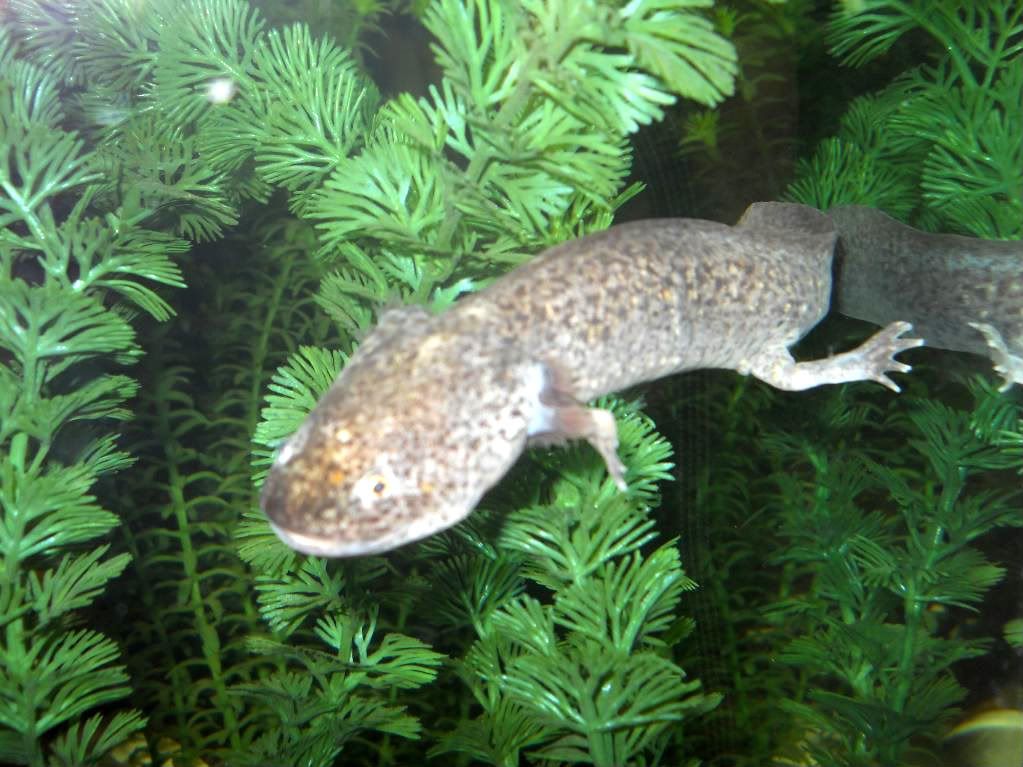
He learnt to live with it, and swam quite well.. one leg rotating one way, this leg going in the opposite direction.
He lived happily with Banana and Tenedor, who were his close friends (Banana was even from the same LFS and were very close). Aristotle Axolotl was always playful, romping about and hugging the other axolotls.
He was the smallest of the group, but they were so close and happy, I didn't seem a need to keep them apart -

Aristotle Axolotl was fed up and lived a happy life in a 400L tank (105G)... lots of room to play with his friends!
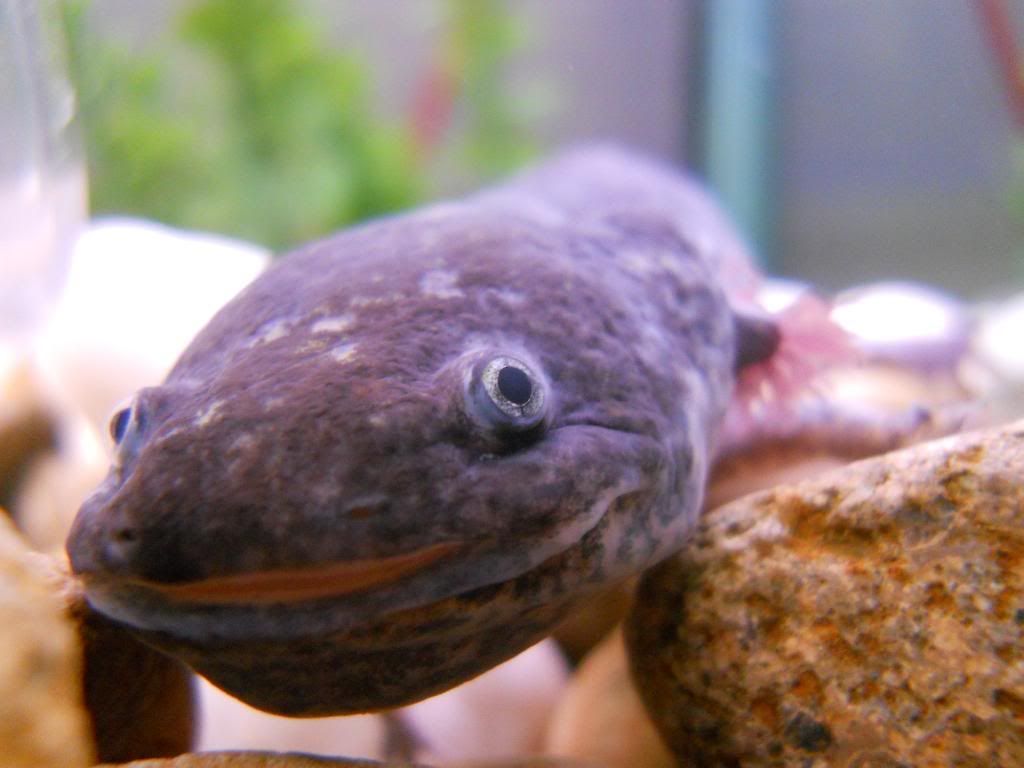
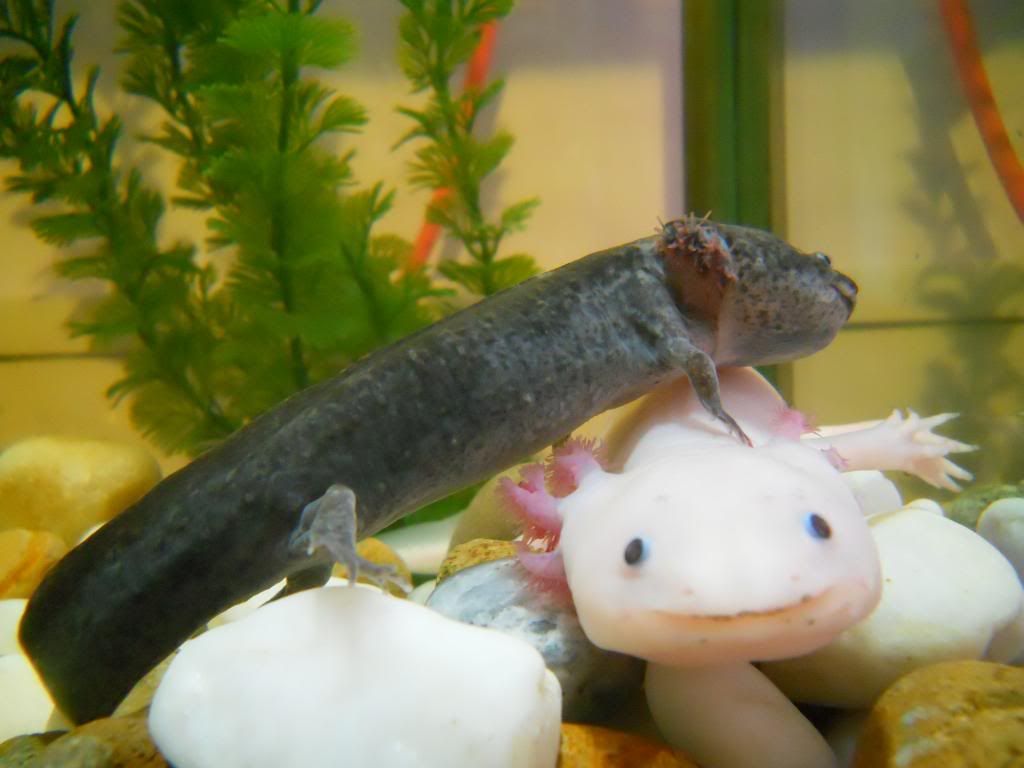 |
| Aristotle Axolotl and Tenedor. |
Aristotle Axolotl, I shall miss you my dear friend.
R.I.P. 1.6.2011.
Bastante.
Bastante, name Spanish for 'pretty' was a beautiful wild-type axolotl.
Bastante.
Bastante, name Spanish for 'pretty' was a beautiful wild-type axolotl.
When I saw him in a local fish store, I had to have him. He was in terrible condition, and although supporting LFS' that don't care for their animals isn't the best... I couldn't leave him there.
I only had him for a month, and was just about to introduce him to the axolotl tank after quarantine.
However, sometimes if axolotls are kept in intolerable conditions, they try to metamorph, to become terrestrial. This only rarely happens, and if the axolotl makes it.. they generally do not live more than 2 years, rather than their normal 15-20 years.
Most axolotls cannot survive the stress of morphing.
Bastante's conditions in the LFS triggered him to try and morph, and each day, I saw his eyes become more protruding, his gills shrink, his dorsal was no more, and he grew eyelids - which shocked me greatly when I saw him blink. He spent his time with his nose in the air, and finally tried to get out of the water. Of coarse, I put a little 'island' into his tank, so he could get out.
Unfortunately, he was one of the many axolotls that don't survive the morph.
 |
| When I first got him. |
A couple of low-quality pictures.
The night before his time ...
Bastante, my pretty little axolotl, I shall miss you.
R.I.P. 18.8.2011.
Hambriento
Hambriento, Spanish for 'hungry' seemed a very fitting name for an axolotl.
Photos taken 17.9.2011.
R.I.P. Hambriento, 14.1.2012. I shall miss you little one!
R.I.P. Feliz, 17.1.12. You shall be missed.
R.I.P. Hambriento, 14.1.2012. I shall miss you little one!
Feliz
My gorgeous copper male, Feliz has been one of the happiest axies around. His name is Spanish for "happy".R.I.P. Feliz, 17.1.12. You shall be missed.























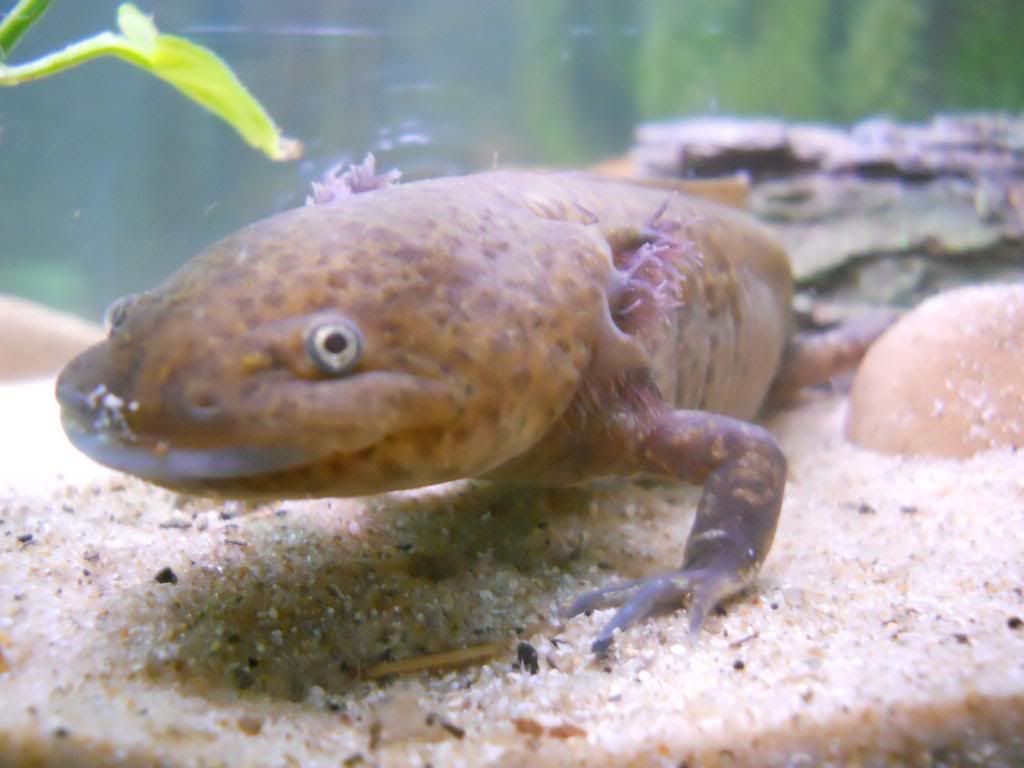
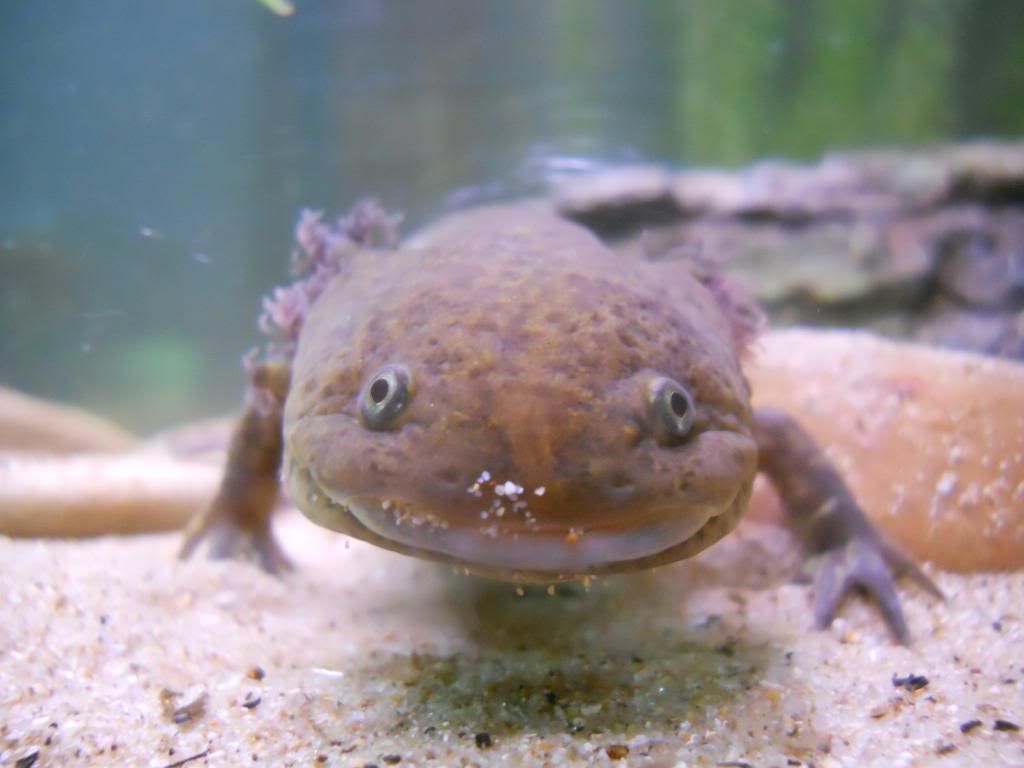
I'm not sure if my axolotyl is male or female, and my friend wants to try breed our axolotyls. His is a lot older than mine. could his harm my fish? how do I know if my fish with metamorphose to be a fish that doesn't need water to live?
ReplyDeleteHello,
DeleteIf you have a look at the page of sexing your axolotl, hopefully that will help.
http://all-about-axolotls.blogspot.com.au/p/male-or-female.html
Breeding axolotls is a lot of work, and I definitely urge you to research lots! Remember a single spawning could produce a couple HUNDRED baby axolotls that will need lots of care, and live food. May want to think about just caring for your current axolotl for the moment.
Also, not sure if you are calling your axolotl a fish, or talking of actual fish?
Axolotls are salamanders, which are amphibians.. so related to frogs and toads. COMPLETELY different from fish.
If you're talking about actual fish, no they will never live without water.
If you mean axolotls, with the right care, they shouldn't morph. There is a bit on morphing axolotls on the front page. Also if you search Caudata.org, you will find lots of info re morphing.
Hope this helps.
Hi there, just wondering what type is Lindo? I noticed it didn't say and I was curious, amazing blog! :)
ReplyDeleteHello,
DeleteLindo is a copper axolotl.
Thanks,
Sarah.
aww cute!
ReplyDelete